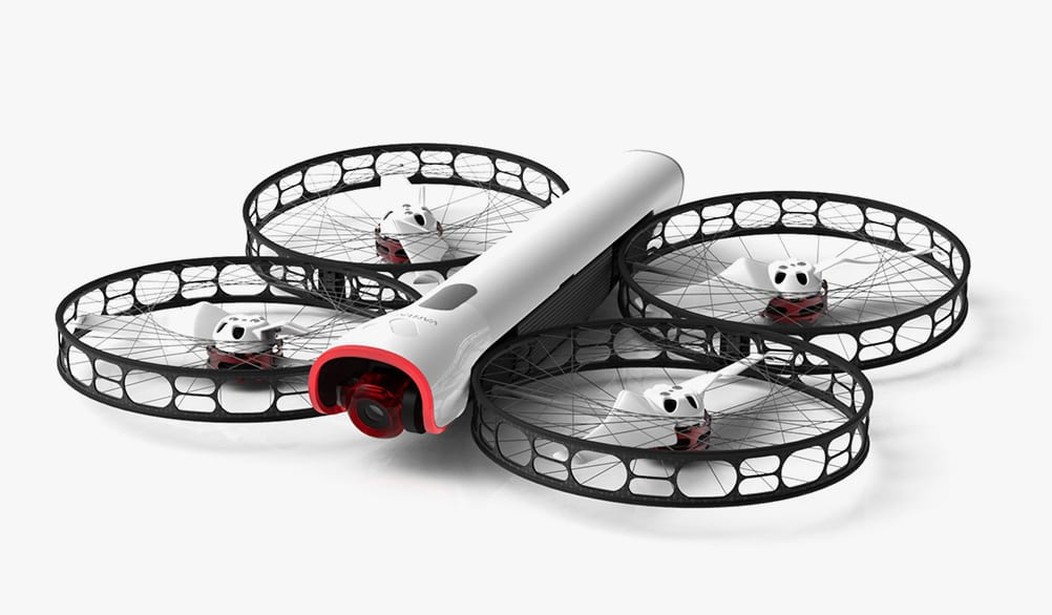The popularity of drones is skyrocketing. According to market research company Gartner:
Production of drones for personal and commercial use is growing rapidly, with global market revenue expected to increase 34 percent to reach more than $6 billion in 2017 and grow to more than $11.2 billion by 2020. Almost three million drones will be produced in 2017, 39 percent more than in 2016.
Among the companies making drones, there’s one behemoth that’s selling a majority to personal consumers: DJI, a Chinese company, offers a range of models costing from a few hundred dollars to nearly $2000. DJI was founded in 2009 by an engineer, Frank Wang, who as a child, used to play with radio-controlled model airplanes.
While most Chinese companies begin by building low-cost copies of existing products, DJI is one of the first Chinese companies in the consumer electronics space to create their products from scratch. The company has done an exceptional job in engineering and marketing, creating drones in many sizes and shapes.
Many companies have discovered how difficult drones are to design. They’re one of the most complex consumer products, requiring expertise in numerous technologies that all need to work reliably and in harmony. A failure of any part of a drone system could lead to a crash or even an injury. It requires expertise in mechanical design, electronics, optics, power management, radios, and especially software.
Drones need to be as light as possible so that their flight times can be sufficiently long. A high-resolution camera needs to be stabilized in flight to allow it to take jitter-free images, whether the drone is stopped in mid-air or traveling over a wide range of speeds, following a subject on the ground. And drones require lots of sensors and wireless radios, including GPS, WiFi, sonar, gyros, accelerometers, magnetometers, barometers, and geo-aware image sensors. Software expertise is needed for all these systems to operate together and for the app that is used to control the drone in flight.
U.S. companies have struggled to compete. GoPro developed their Karma drone that works with their GoPro cameras, but the product initially was recalled for suddenly falling from the sky and had to be redesigned. The Karma is now available for $800.
Another startup, Lily, raised $34 million in advance sales with a compelling video, only to file for bankruptcy without shipping a single unit. They’re now being sued by the San Francisco District Attorney’s Office for faking their video and misleading customers.
A third drone company, 3D Robotics, co-founded by Chris Anderson, the well-regarded editor-in-chief of Wired, raised $180 million over several years from companies such as Qualcomm and Autodesk, and a number of venture capitalists. They opened offices in Silicon Valley, Austin, and Tijuana and hired 350 employees. But the company’s Solo drone also failed to take flight.
They built over 100,000 units, but sold only 22,000, due to competition from DJI that offered better products at lower costs. The company is now only selling software for commercial applications, including for mapping and aerial surveying. Savvy shoppers can find the Solos that originally sold for $1400 on closeout for under $300 at Amazon, although reviewers say there’s little to no customer support after purchase.
Now there’s another American company that’s about to make its impact in the world of drones. Vantage Robotics was founded by a pair of experienced Silicon Valley engineers, Tobin Fisher and Joe van Niekerk. They’ve taken a new approach to drone design that’s received a lot of attention and acclaim, and they appear to be on the road to having a better outcome than their predecessors. Originally crowdfunded, their Snap drone is one of the most imaginative designs in three areas: photography, safety, and portability.
The Snap is the first flying 4K video camera with image quality superior to any other drone. It’s accomplished using a high-end sensor from Sony, advanced image processing, and their in-house developed image stabilization system.
It’s also one of the safest of all drones. Most drones have four propellers that are exposed and spin at high rotational velocities, making them dangerous in use. Vantage created skeletal enclosures around their propellers that have virtually no weight, no drag, and survive most crashes. The design is based on using a series of lightweight spokes, similar to what’s used on a bicycle wheel. For traveling, the Snap comes apart using magnets and fits in a small case.
Videos taken with Snap have created a lot of buzz and helped them win Sir Richard Branson’s 2017 Extreme Tech Challenge (XTC) award.
After a delay of more than a year from their initial projected ship date, Vantage Robotics has started manufacturing the product in the U.S. and has begun shipping to its first customers.
So, can a small team of American engineers create a product that can compete with a giant Chinese company? Unlike GoPro, Lily, and 3D Systems, they’ve made it this far without the huge investments and a large number of employees, instead just using a small, dedicated team. From early indications, Vantage has an excellent chance to succeed by having created one of the most innovative drones yet.
Pre-order pricing is $895 and retail will be $1295. Delivery is scheduled for later this summer after fulfilling the orders from their crowdfunding supporters.
(Disclosure: I provided some product consultation to the company several years ago for a short time, but have had no relationship since that time.)









Join the conversation as a VIP Member